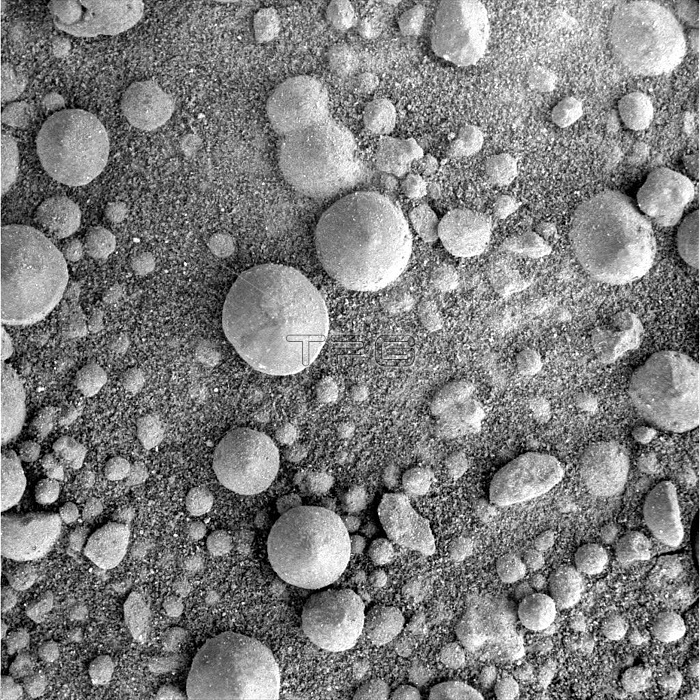
This frame from the microscopic imager on NASA's Mars Exploration Rover Opportunity shows spherules up to about 5 millimeters (one-fifth of an inch) in diameter. The camera took this image during the 924th Martian day, or sol, of Opportunity's Mars-surface mission (Aug. 30, 2006), when the rover was about 200 meters (650 feet) north of 'Victoria Crater.' Opportunity discovered spherules like these, nicknamed "blueberries," at its landing site in "Eagle Crater," and investigations determined them to be iron-rich concretions that formed inside deposits soaked with groundwater. However, such concretions were much smaller or absent at the ground surface along much of the rover's trek of more than 5 kilometers (3 miles) southward to Victoria. The big ones showed up again when Opportunity got to the ring, or annulus, of material excavated and thrown outward by the impact that created Victoria Crater. Researchers hypothesize that some layer beneath the surface in Victoria's vicinity was once
| px | px | dpi | = | cm | x | cm | = | MB |
Details
Creative#:
TOP22309556
Source:
達志影像
Authorization Type:
RM
Release Information:
須由TPG 完整授權
Model Release:
N/A
Property Release:
No
Right to Privacy:
No
Same folder images:

 Loading
Loading